MASHRABIYA: LITE CLAY
This material design research develops a novel lightweight earth-fiber mix design for parametric modeling and digital fabrication, by increasing carbon storing vegetable fiber content, and creating paper-thin partition assemblage.
This study concludes a line of ongoing research on fiber-earth compositions for 3D printing technologies using earth- and bio-based materials . Throughout the study described below, we conducted experiments using the Lite Straw Clay material mixture. The goal of this research is to conduct the most efficient 3D printing process with natural fiber material, specifically Lite Straw Clay. The research began with material studies for printability and extrudability. Then, geometric studies were conducted to produce a super lightweight but structurally sound form to test the limit for minimum material.
The geometric exploration began with an investigation into the symbolism and patterns in traditional fabric craft, followed by an investigation into shading patterns in North African and Mediterranean contexts. Traditional woven fabrics, specifically the Noche de Berberisca dresses, exhibit weaved patterns that helped construct fabric shape, as a reinforcement element. The investigation continued into the arab shading element - the Mashrabiya typology, asking, how is it possible to reinterpret traditional craft embedded with ancient knowledge on passive shading systems, but with the lightness typical of fabric construction?
This study concludes a line of ongoing research on fiber-earth compositions for 3D printing technologies using earth- and bio-based materials . Throughout the study described below, we conducted experiments using the Lite Straw Clay material mixture. The goal of this research is to conduct the most efficient 3D printing process with natural fiber material, specifically Lite Straw Clay. The research began with material studies for printability and extrudability. Then, geometric studies were conducted to produce a super lightweight but structurally sound form to test the limit for minimum material.
The geometric exploration began with an investigation into the symbolism and patterns in traditional fabric craft, followed by an investigation into shading patterns in North African and Mediterranean contexts. Traditional woven fabrics, specifically the Noche de Berberisca dresses, exhibit weaved patterns that helped construct fabric shape, as a reinforcement element. The investigation continued into the arab shading element - the Mashrabiya typology, asking, how is it possible to reinterpret traditional craft embedded with ancient knowledge on passive shading systems, but with the lightness typical of fabric construction?

Images: Detail of ktef (punta or peto) with birds facing one another, Sephardic Museum in Toledo; Moroccan Jewish bride, Oskar Lenz, 1892.


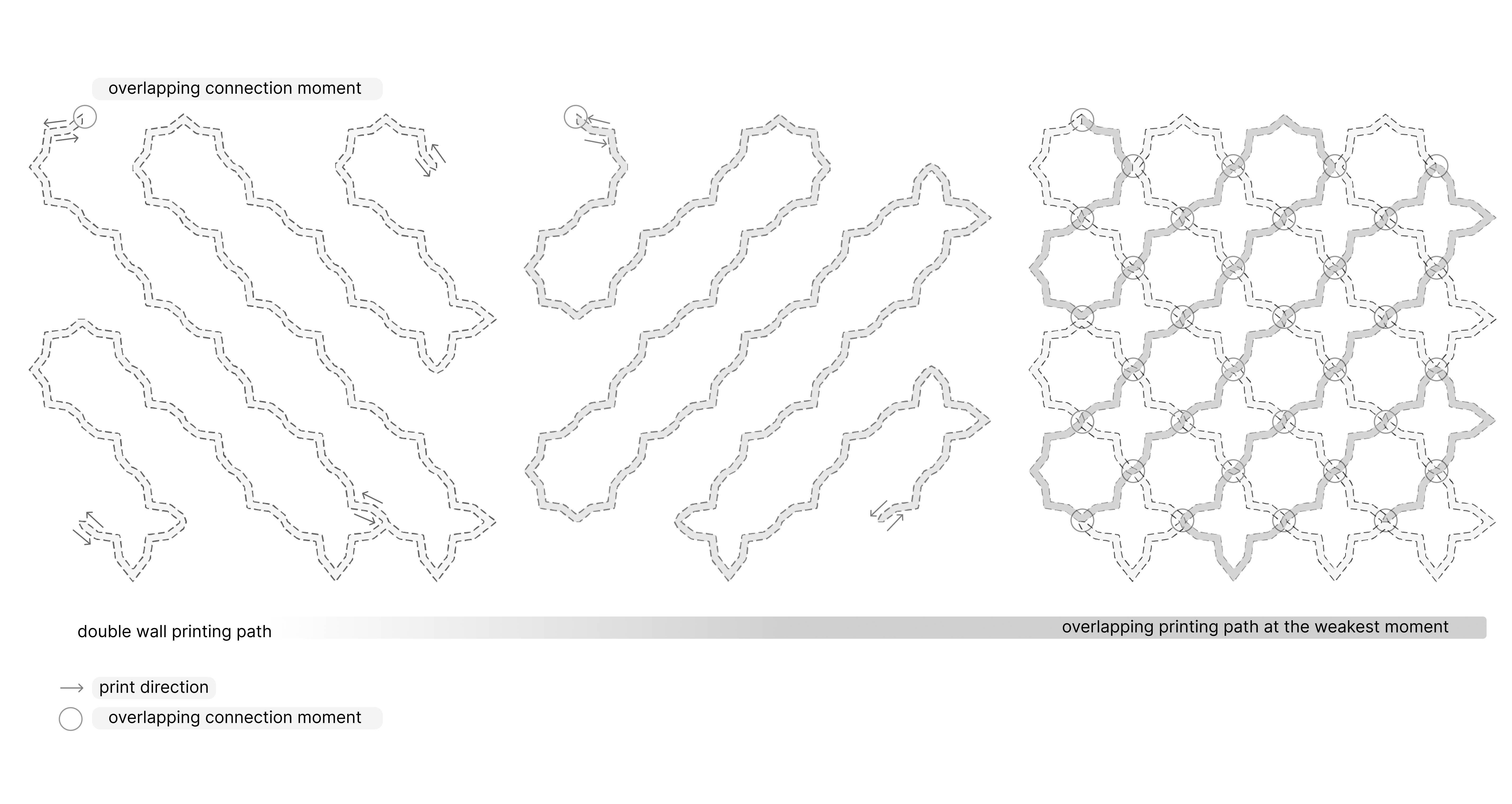
As a final deliverable, first pass geometric studies showcase the lightweight and structural possibilities of each material. The significance of this research lies in the development of a methodology for identifying novel mix design for digital fabrication, by increasing carbon storing vegetable fiber content within digital earth, and by creating a range of natural 3D printed assembly types: from mass-insulation walls to paper-thin lightweight partition assemblage.
The final piece was installed in 1014 Space for Ideas, as a hanged artifact that proposes an interplay of light and shadow.
The final piece was installed in 1014 Space for Ideas, as a hanged artifact that proposes an interplay of light and shadow.

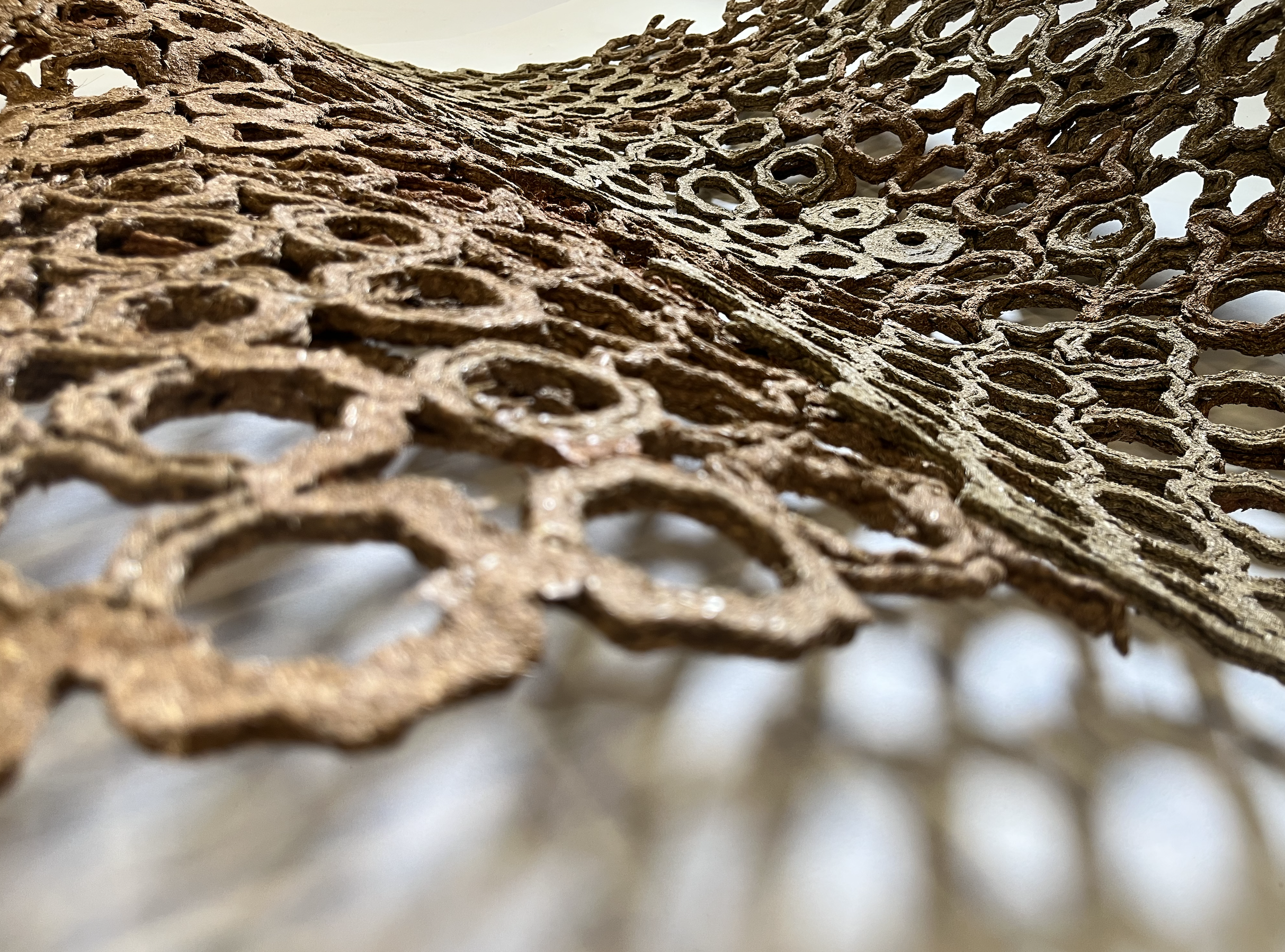

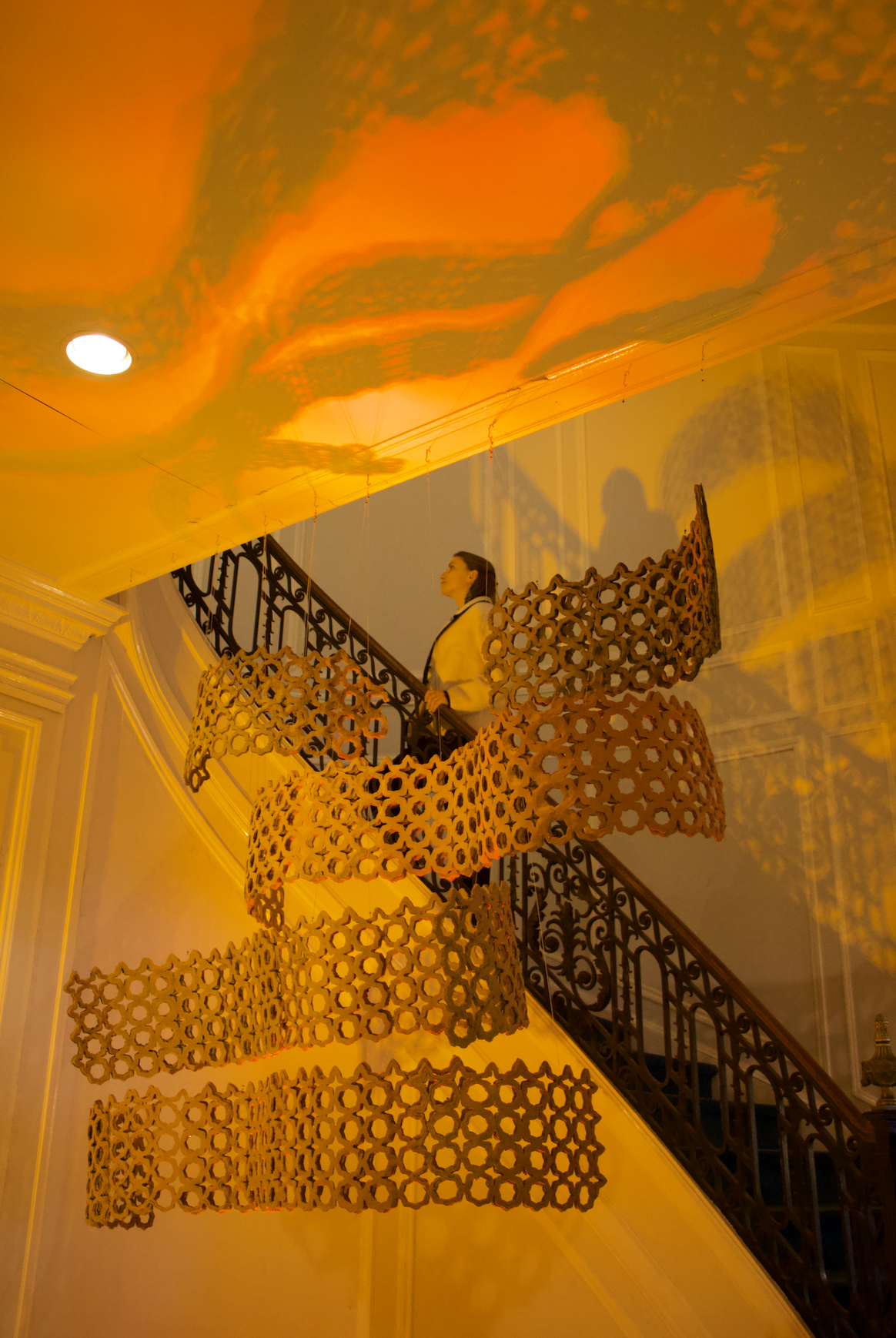
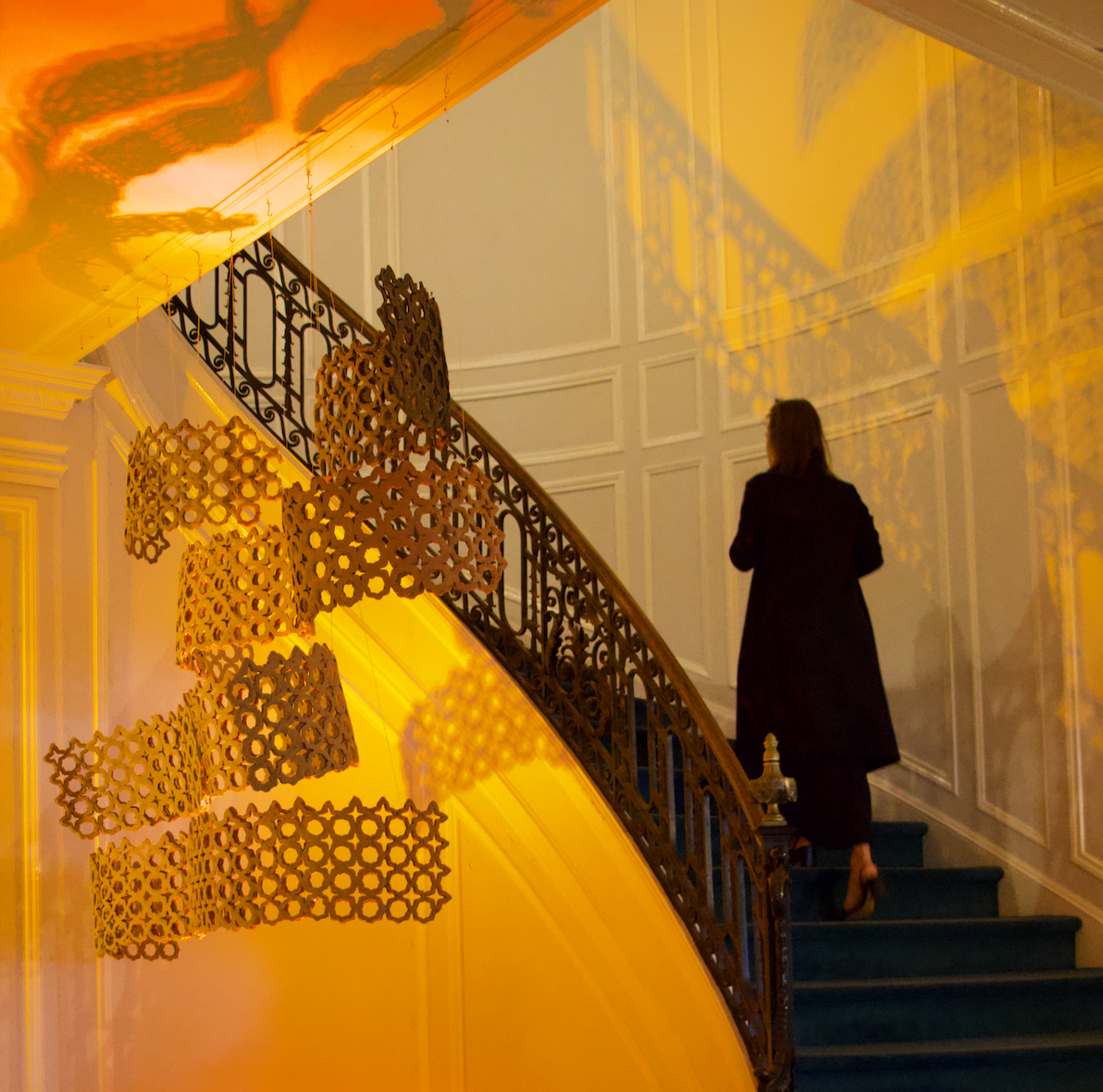
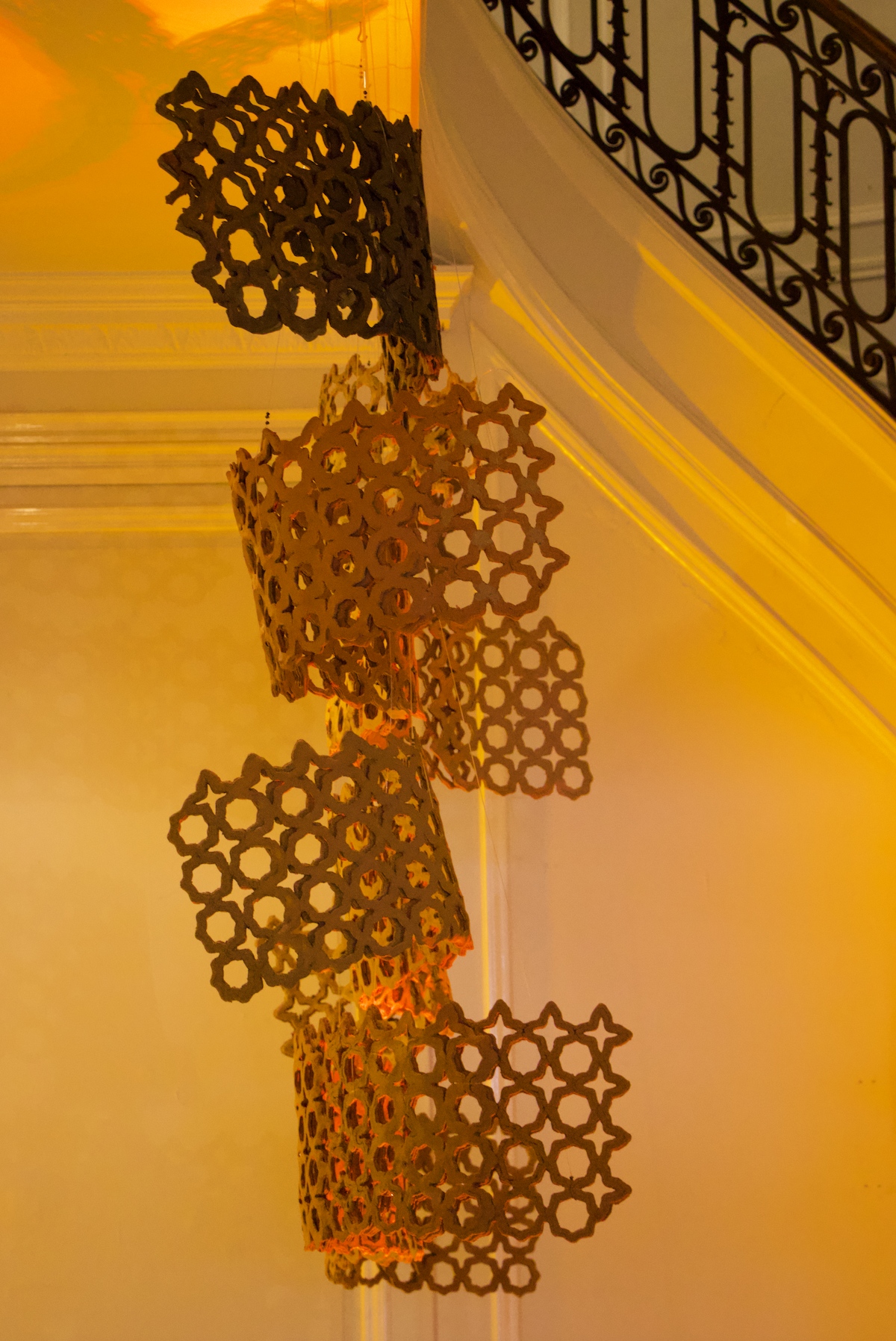
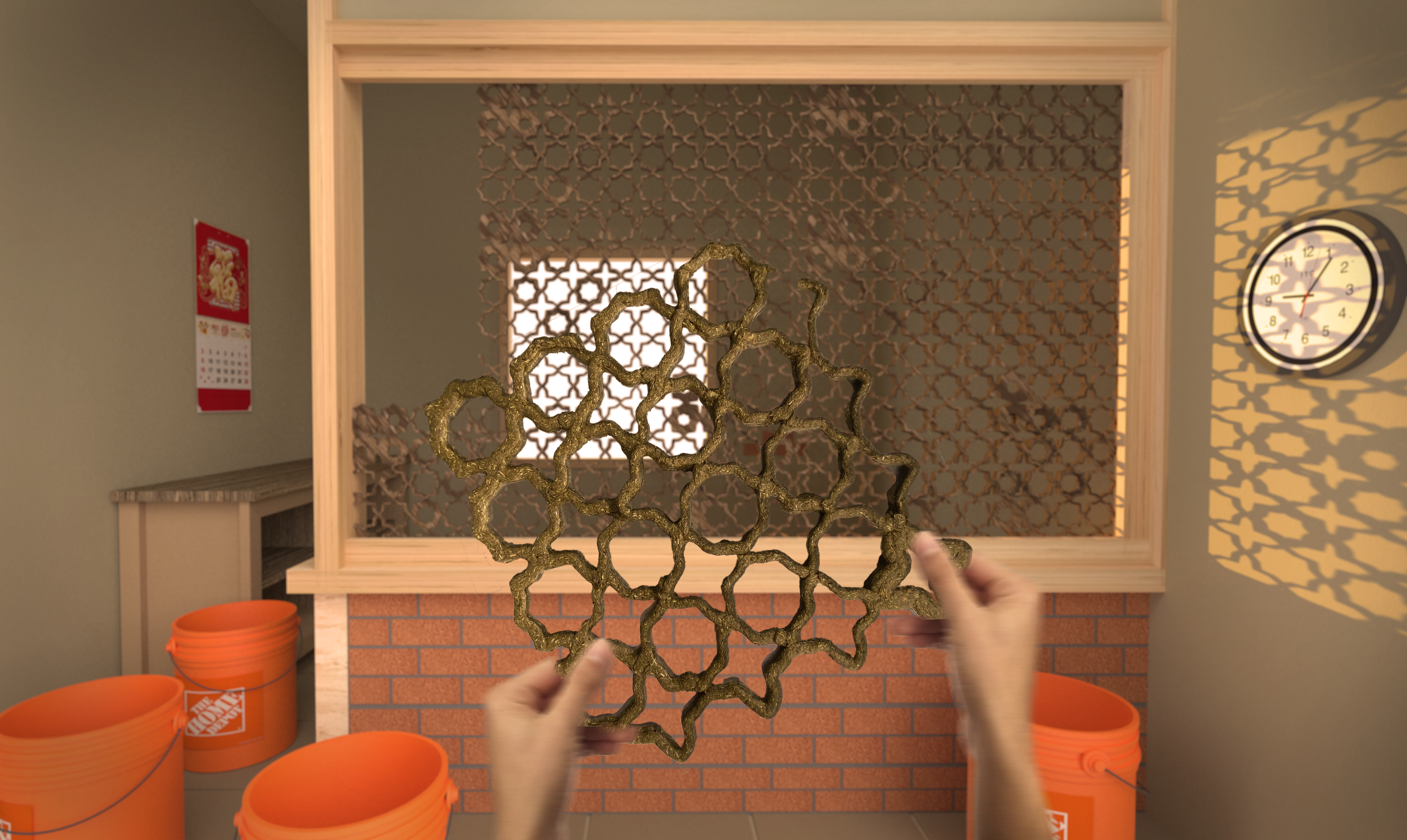

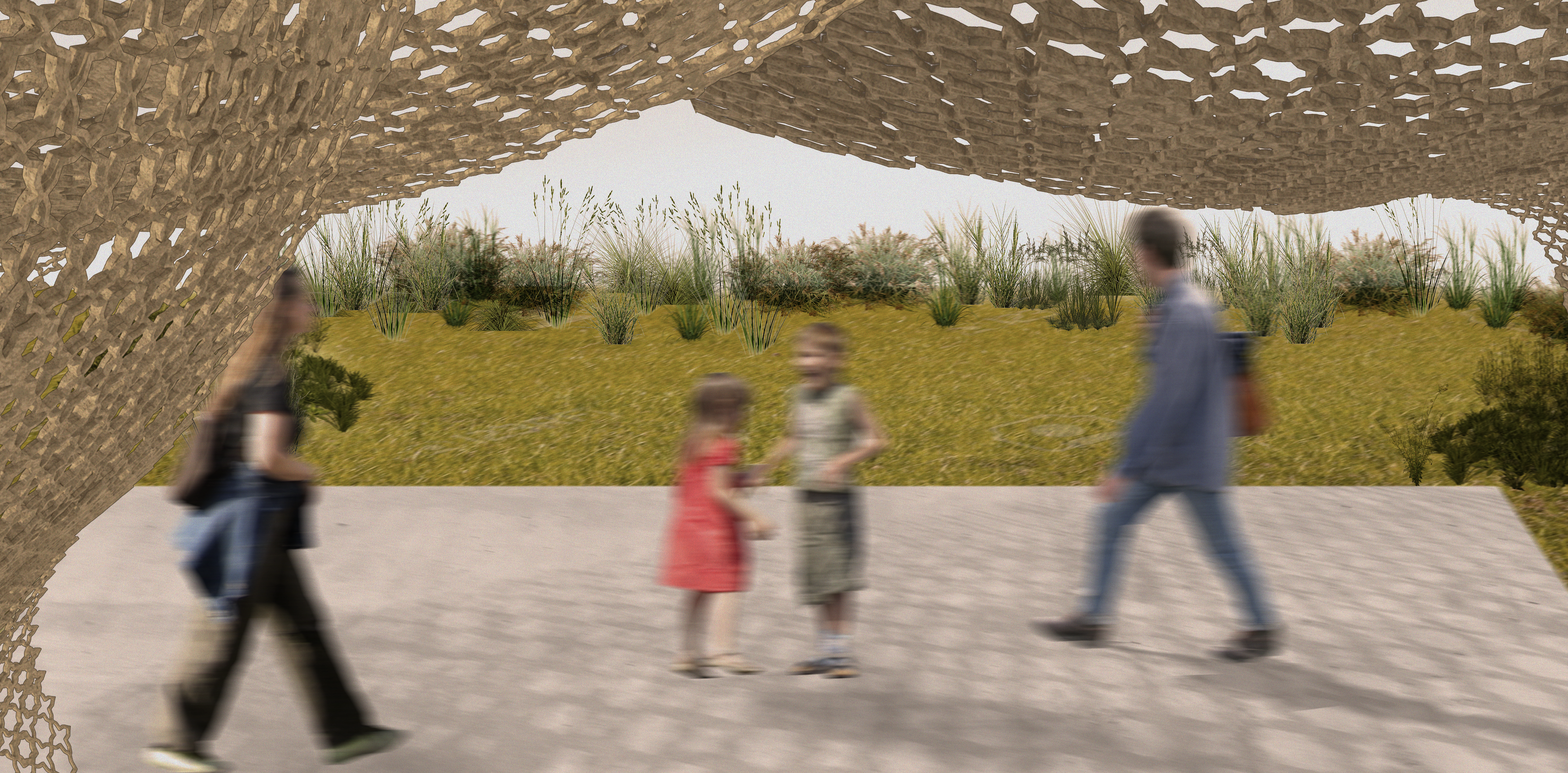
duration:
Summer 2022 - ongoing
collaborators:
Natural Materials Lab
research assistants:
Tashania Audrey Akemah, Olga Beatrice
exhibition:
1014 Space for Ideas
publication:
forthcoming in a conference paper submitted to Acadia 2023
